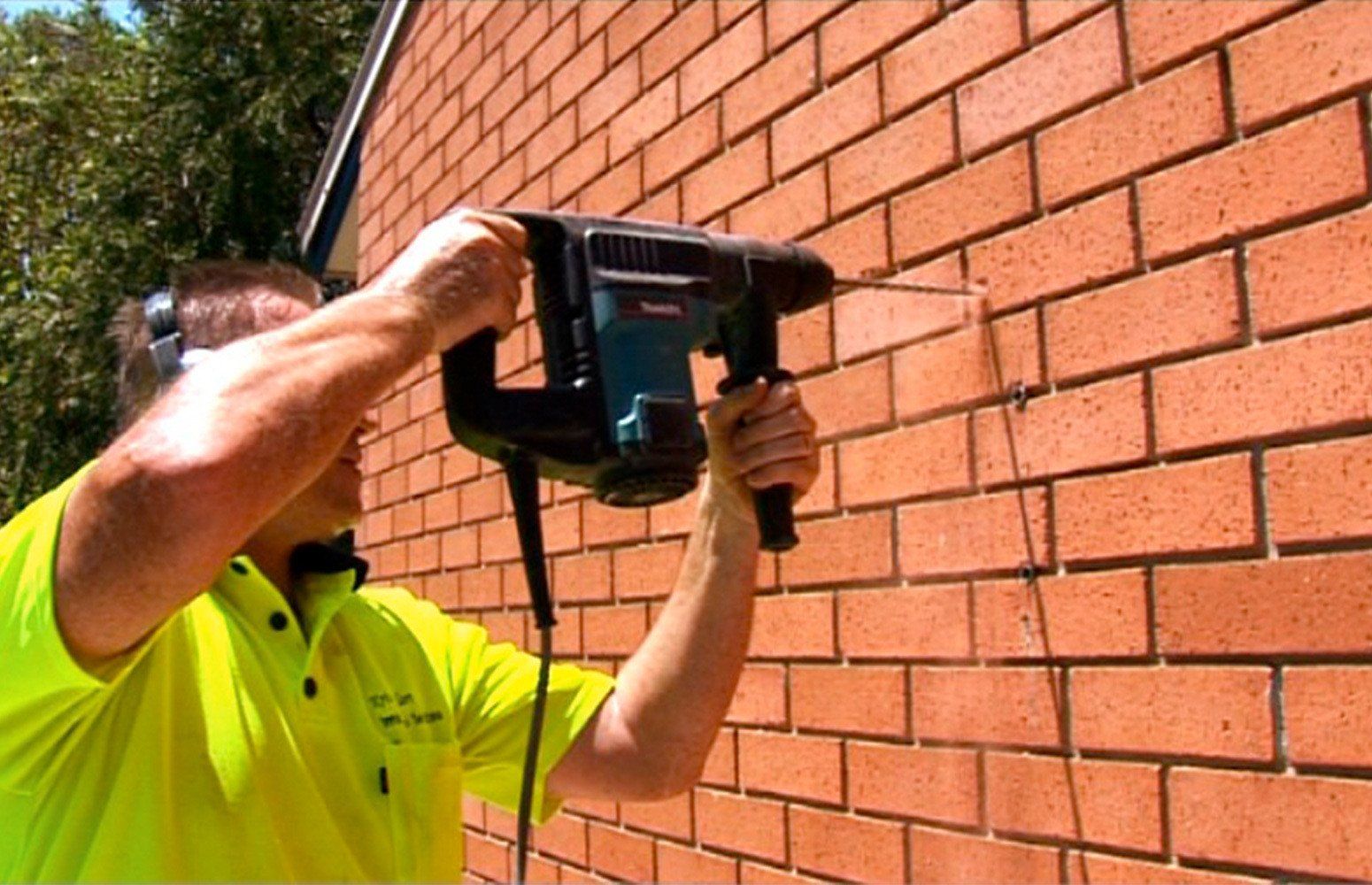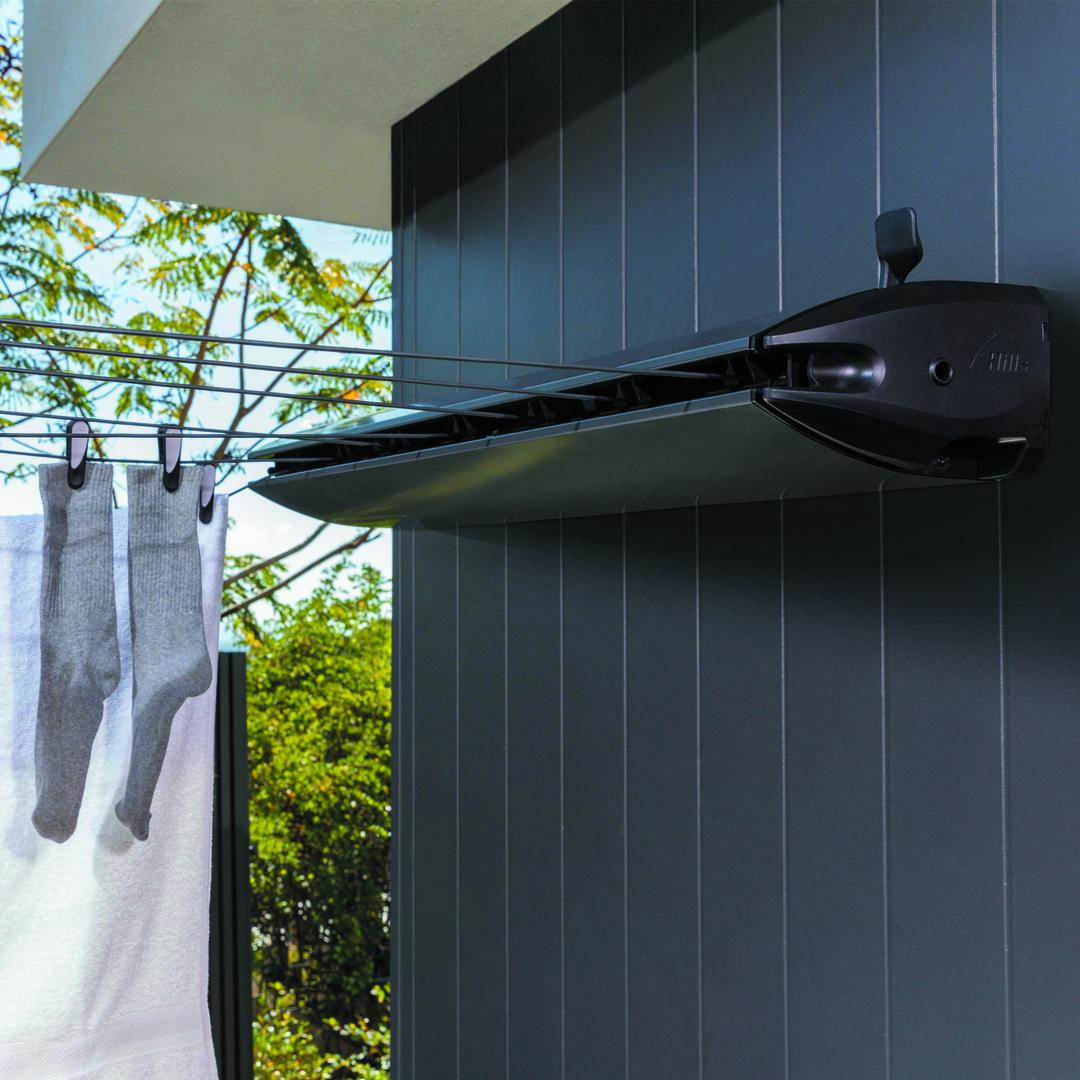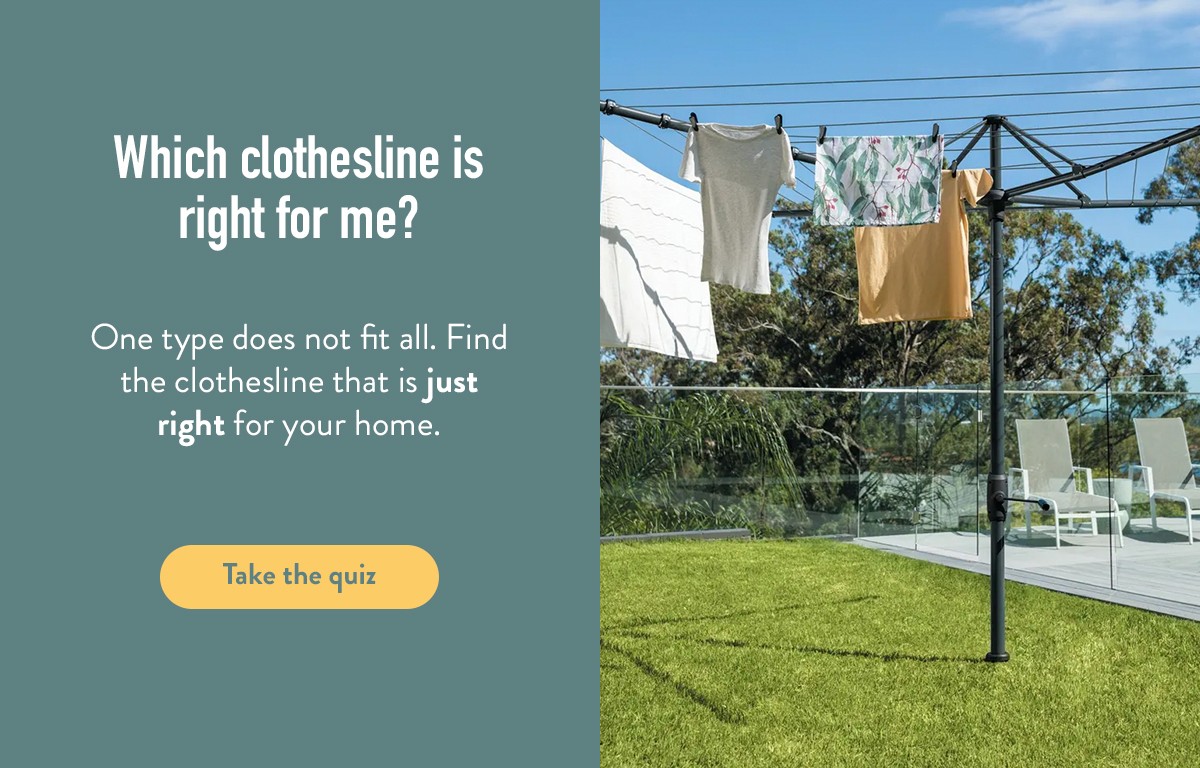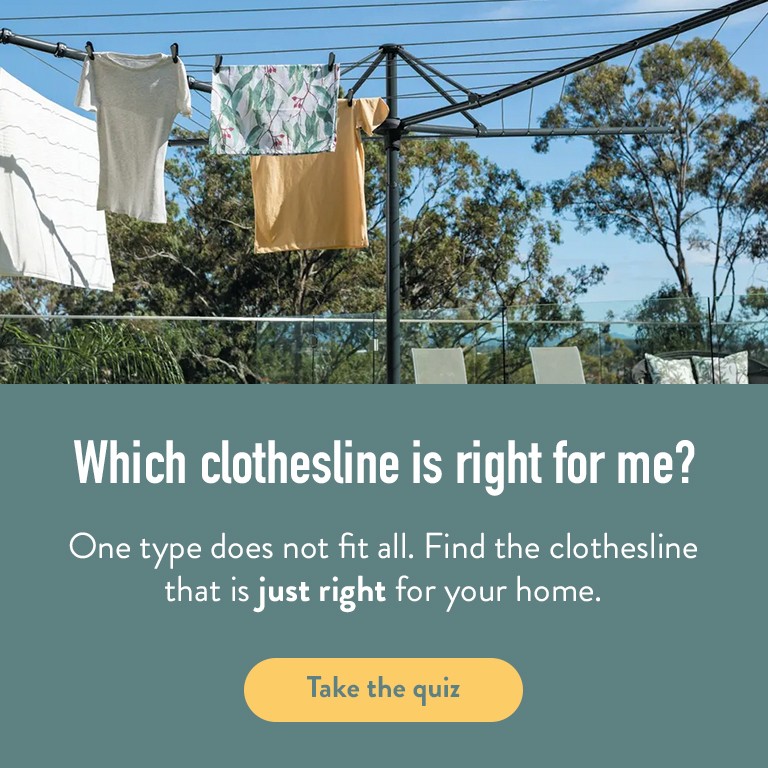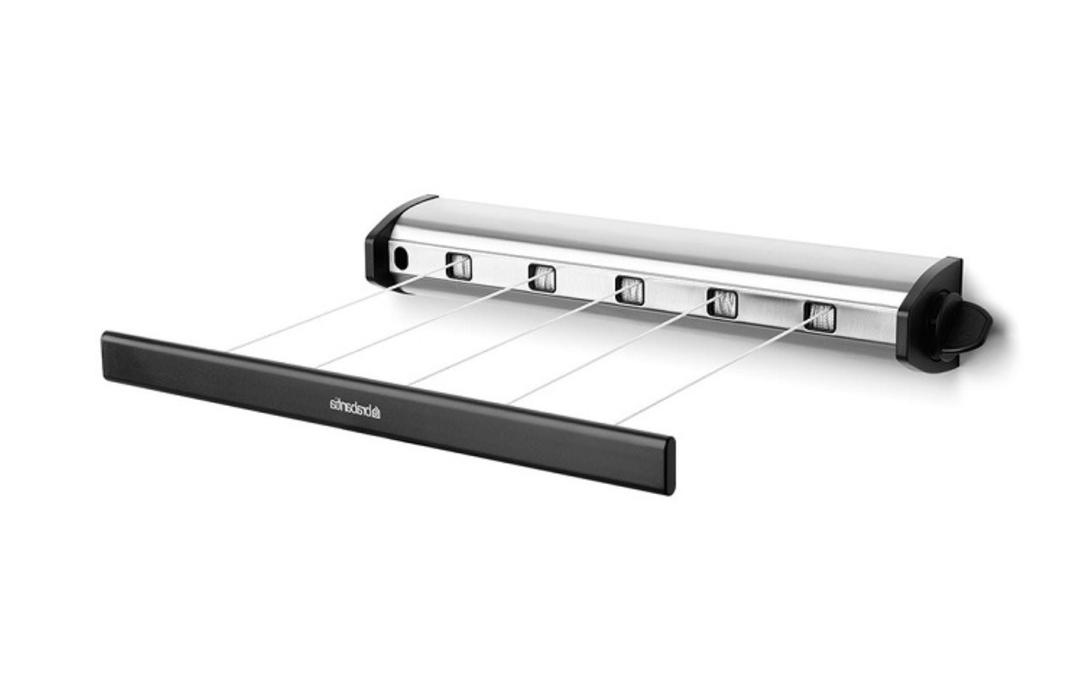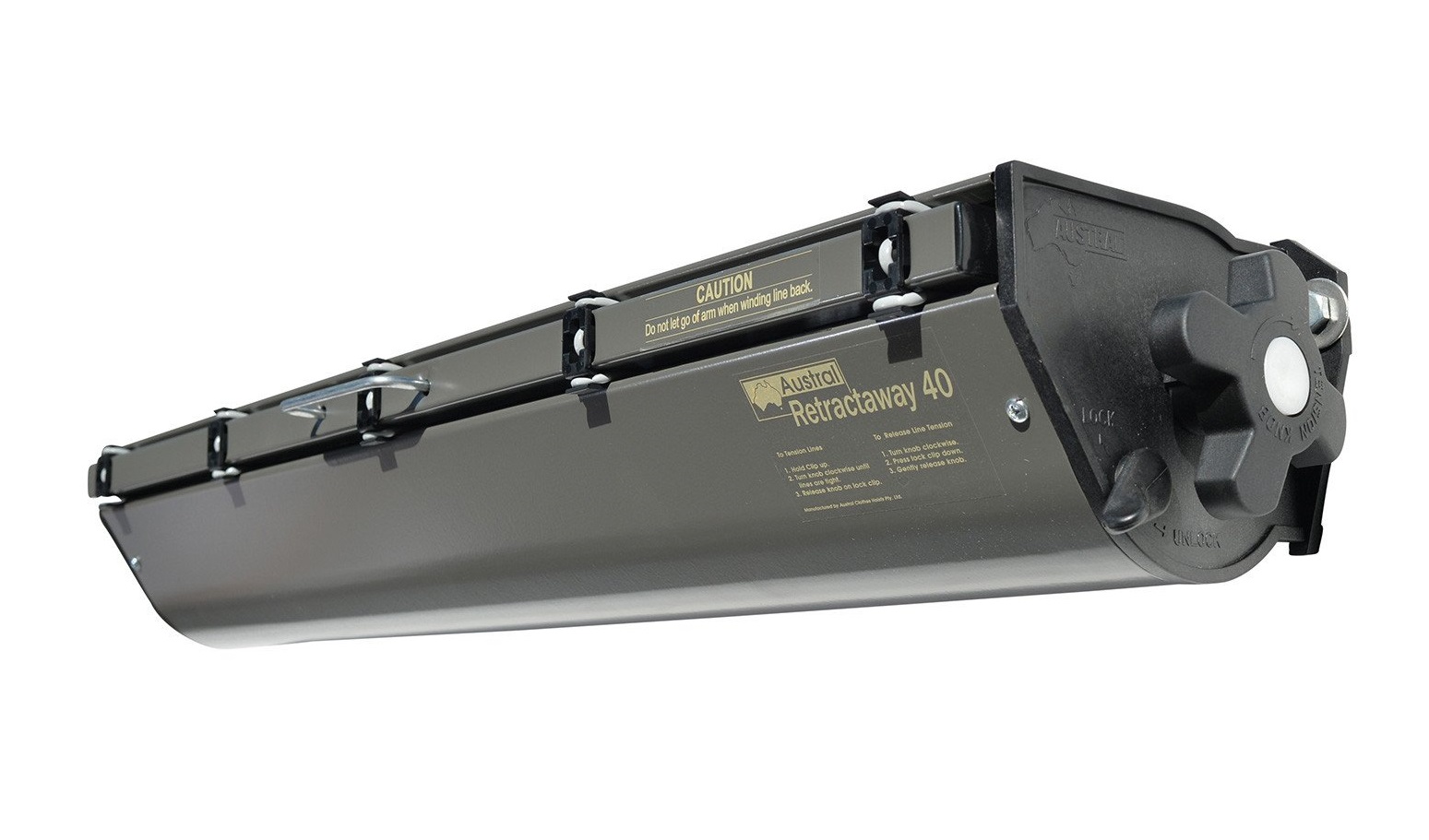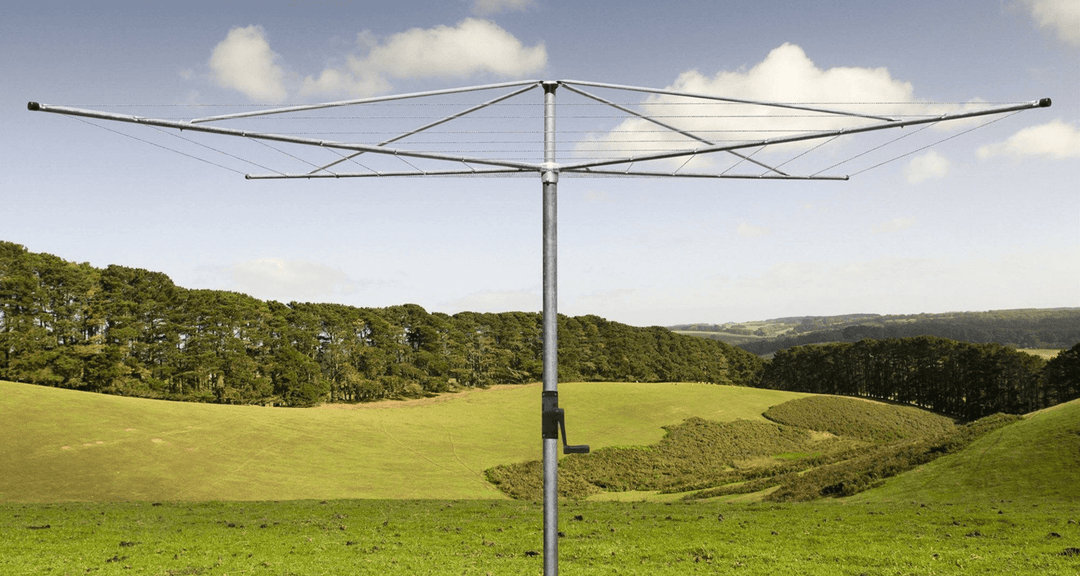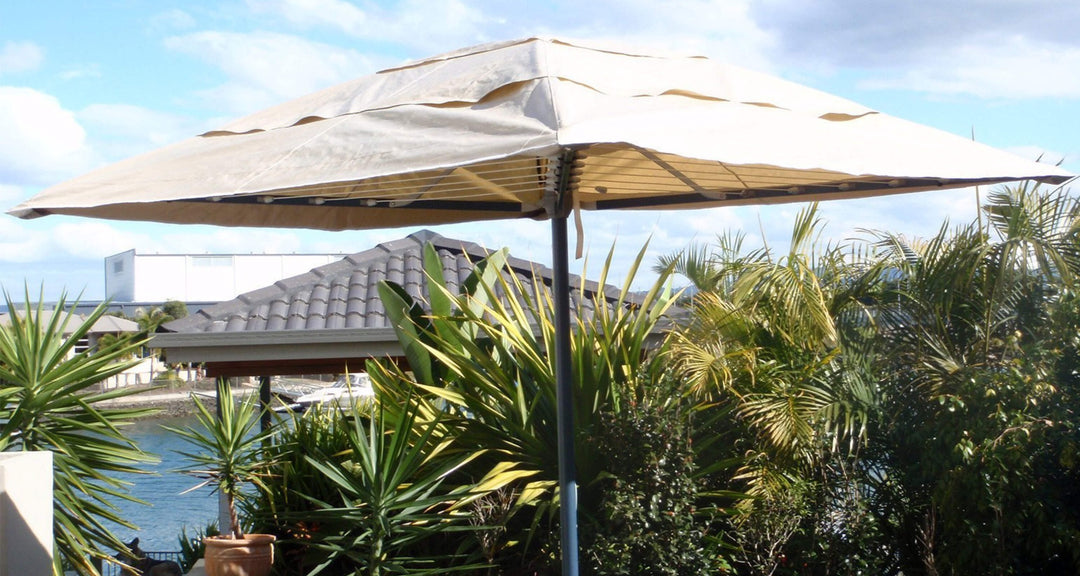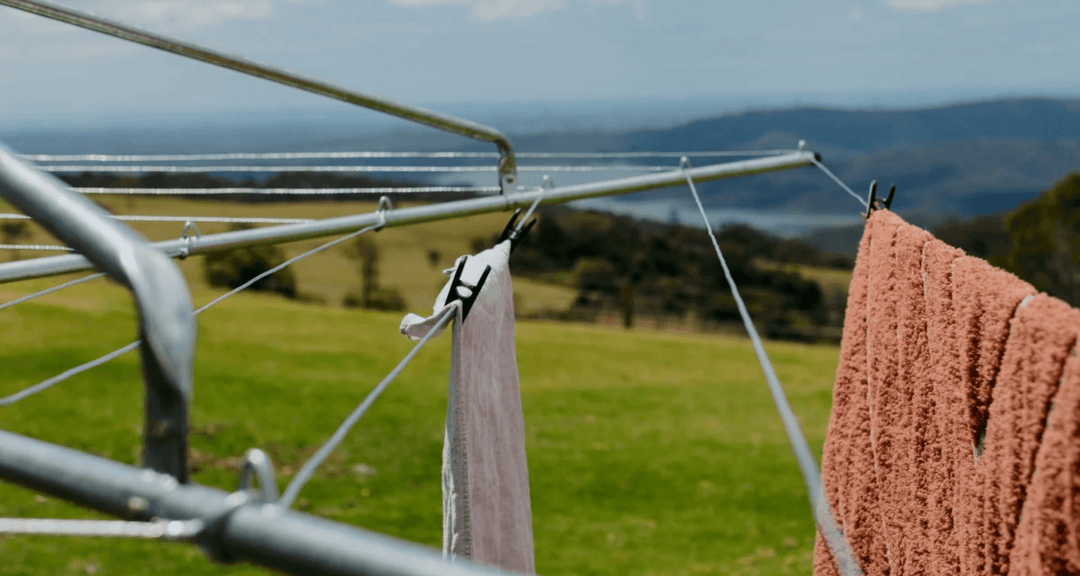3 Tips to Choosing The Best Retractable Indoor Clothesline
Those who have figured out the solution to those dilemmas and want to take advantage of the value that a retracting indoor clothesline can provide, we salute you and we will be happy to provide you with a few simple things to put into perspective so you can find that perfect airer for your home.
What Features to Look For
There are many models out on the market that have tons of bells and whistles, sadly, many of these barely add value to the retractable indoor clothes line itself and can even be the root cause for some reliability issues.
For many years, the general design of clotheslines have remained the same simply because it is a single-purpose device that virtually needs no technological intervention to make your clothes dry faster—after all, everything is controlled by nature.
Why bother changing something that already works, right? Well, there are some positive aspects to these changes that you might want to consider.
The really good thing about some innovations done in the retracting indoor clothesline market is that companies keep outdoing each other in terms of aesthetics.
Gone are the days when the choice is limited to just cotton ropes and the good old cast iron pulleys, there are retractable indoor clothes lines that have a very compact profile to help them easily blend in with the surroundings while some have been equipped with individual tensioning systems for a better end-user experience.
Take for example the Hills Retracting 5, this model is a very well built retractable washing line that has five individual drying lines each of which are equipped with their very own tensioning mechanism.
This eliminates the dreaded uneven line sagging so the lines are evenly taught every use and the user will no longer have to deal with individually tightening the lines so you end up with a great-looking airer that virtually needs no maintenance!
To cater to a larger market, Austral has the Sunbreeze series of affordable retractable clotheslines that are very wallet-friendly and built remarkably well.
The Brabantia Retractable series of airers are fast becoming a popular solution to those who want a retractable clothesline with huge capacity without leaving their yards looking messy.
There are countless others out on the market which might work for you, the two above can be used outdoors too but we just used them as examples to give you an idea.
Levers are much easier to use
than knobs and cranks.
Apart from the aesthetics, go for a retractable indoor clothesline that have locking mechanisms which are easy to use.
We normally prefer levers or cranks for this aspect of the washing line, this makes it very easy for the user to extend the lines and keep them taut with a few easy cranks or by simply pulling down a lever without much effort.
Retracting indoor clothes lines which have small knobs may become difficult to use over time not because of reliability or failure of the mechanism but because these devices typically last for decades (at least the reliable brands we’re familiar with).
The older we become, the weaker our hands get so it is best to acquire a washing line that don’t require much grip in order to have the cords properly tensioned.
Watch out for units that have mostly plastic construction, while the majority of retractable indoor clotheslines have cabinets fashioned from galvanised steel, there are still a lot of manufacturers out there that skimp on materials in order to keep costs down.
The worst part is, even the load bearing components may be made out of plastic, if it is fibreglass reinforced then that shouldn’t be much of an issue but as much as possible, we always recommend opting for a unit which limits plastic usage to just the trims.
The rest of the hardworking components like the reel, brackets, tensioning mechanism, etc. should be made of metal if you want to ensure that your purchase is a good investment.
Reliable retractable washing lines are mostly made of heavy-duty galvanised steel instead of cheap plastics.
Some manufacturers have models which sport lines that are reeled/tensioned independently, this is a boon if you’re not the technical type and want lines equally tensioned all the time or if you simply don’t want to bother with adjusting the lines yourself.
But as the saying goes, the more parts your retractable indoor clothesline has, the more that can go wrong. The simpler the units—we can almost guarantee this—will last longer or save you from headaches down the road.
Choosing the Right Capacity and Number of Lines
A very well built retractable indoor clothesline that will last—no matter how expensive it might be—is no good if it cannot manage to take care of the laundry demands you throw at it. Frankly speaking, choosing a retracting indoor clothesline that will accommodate all of your clothes is just a part of the equation.
Your indoor airer must be properly sized to guarantee an effortless laundry experience, high capacity units should not only handle a week’s worth of laundry for a family of four or more but also do it efficiently.
And ‘efficiency’ is the keyword here, take note that you will be drying your articles indoors, you will be relying heavily on air movement or dehumidification courtesy of your home’s air conditioner so drying times will not be as fast as outdoors.
The wider the gaps between each
line, the faster your clothes will dry.
The longer your retractable indoor clotheslines’ cords are, more often than not, the narrower the cabinet will be and those with lines divided into five or more usually have less space between them.
If possible, purchase one that has at least four or five lines with a cabinet width of 800 millimetres or higher like the Austral Retractaway 40, you will need a longer room if you want to use the full capacity of the retracting indoor clothes line but your articles will definitely dry faster.
One should dedicate at least 12 metres of drying line per member of the family, most suggest metres but we think there’s not enough headroom there so if you have a family of four, an airer with 45 to 50 metres of drying line space should be more than adequate.
Proper spacing between the drying lines should be observed. For outdoor units we normally recommend around 330 millimetres or more but for indoor ones, anything below 140 millimetres of gap between each line is a little too cramped.
This will inhibit the drying performance of your clothesline and you don’t want that to happen because of one significant factor: Your clothes are not being exposed to sunlight therefore odour causing bacteria or moulds will wreak havoc on them.
If space is really tight you can go with very narrow clotheslines that have gaps of around 120 millimetres but you must take into account that mechanical intervention in terms of ventilation might be needed for really gloomy or cool days.
It’s a really good thing if your central air conditioning’s air intake is situated in the laundry area which guarantees sufficient air movement but most households use mini splits nowadays.
At least 12 metres of drying line space
should be allocated to every person
within a household.
If your home is equipped with mini splits, chances are your laundry area does not have its own air conditioning unit, you can keep the door open and have a fan blow directly toward your clothesline and rely on the adjacent room’s dehumidified air to get the job done.
Installing a ventilating fan is a very good idea too or if that is not an option, you can use a dehumidifier to keep humidity at acceptable levels while keeping the laundry room’s door closed.
Opt for a Reliable Brand and Seller
There are dozens of manufacturers that sell retracting indoor clotheslines but only a few are actually reputable brands. For this, we are—frankly, partial towards the Australian brands such Austral Clothes Lines, and Hills Hoist Clothes Lines.
Both Daytek and Austral manufacture their products on shore while Hills has chosen to outsource their production in China which might put off some people but based on our observation, the quality of their products hasn’t really degraded so it seems that they are keeping a tight quality control on the production so that’s a really good thing.
Selecting a brand is just one thing, choosing a seller that can help you when the need for help comes is another.
A lot of people make the mistake of purchasing clotheslines from some random store, completely unaware of what may lie ahead, most clotheslines don’t require maintenance, parts rarely break down and if they ever do (though we seriously hope that it won’t), chances are, you’ll have to give the store a call for help.
The seller must be able to provide their customers with impeccable quality of service. The buying experience, installation, and after-sales support should all be a positive affair.
The ugly truth is, most stores only care about selling their products and keeping the revenues keep flowing in as much as possible not knowing that they will only survive if customers keep coming back to them.
An honest company is a reliable
company, choose a store that
actually takes care of its customers.
Making a purchase should be a smooth affair, should anything go wrong with the transaction the store should be responsive and diligent on getting it resolved and they must be able to take control of the situation, furthermore, they should maintain a constant communication with the customer for updates.
Installation is another important thing, the installer should be very knowledgeable of the process like knowing the dos and don’ts when mounting on drywall, masonry, or other surfaces that may complicate the installation process to ensure that no hiccups will occur when using the product.
Failure to install your retracting indoor clothesline can result in damage not to just your home but also the clothesline itself.
Next up is after-sales support, some companies are very hard to reach when it comes to this particular aspect of the whole acquisition process and some even go as far as to overrule the warranty policies in order to keep overhead costs at bay.
•••••••••••••••••••••••••••••••••••••••••••••••••••••••••••••••••••••••
The installer should be very
knowledgeable of the process
like knowing the dos and don’ts
when mounting your new airer.
•••••••••••••••••••••••••••••••••••••••••••••••••••••••••••••••••••••••
You should focus your energy and attention towards sellers that stand by their products and there is nothing more reliable than reading verified reviews from customers who have first hand experience with the store that you are interested in.
Testimonials are undisputable proof of companies who take care of their customers, we can go over this numerous times end even talk about tons of positive reviews but at the end of the day it will all boil down to your final decision.
Key Takeaways
Buying a retractable indoor clothes line can be as easy as 1, 2, 3 but if you want to make sure that it will last you a long time with very little issues, pay attention to all of the tips we have provided above.
There are many other factors that we have not mentioned in this post be we feel that these are the most vital of all the aspect we may focus on.
So here’s a quick reminder of what we have discussed and things to focus on when purchasing your new retracting indoor clothesline:
Don’t be dazzled by the unnecessary bells and whistles
Prioritise ease of use
Function comes before form, metal over plastic
Dedicate at least 12 metres of drying line per member of the household
Your airer should have wide gaps between drying lines
Research reviews not just on the airer but also on the seller
If you have reached this part of the article then you should now be able to set your priorities properly and expect a positive outcome, we hope that you find these information useful and good luck with hunting for your new retracting indoor clothesline!
 Fold Down
Fold Down

 Rotary Hoist
Rotary Hoist
 Retractable
Retractable
 Portable
Portable
 Ceiling Airer
Ceiling Airer
 Covers
Covers

